On each day from March 16 to October 1, 2003 one copy of the New York Times was purchased at various locations in New York City. A total of 200 newspapers were collected.
The photographs were made by fixing the camera-lens on the first newspaper (March 16th). The distance between the first newspaper and the lens was more or less 12 feet.
Each photograph was exposed at the same exposure value as the first exposure. After each exposure the following day’s newspaper was placed on top of the previous edition and another exposure was made.
Two hundred photographs and this statement constitute the piece.
January 1, 2004
(Web update: January 1, 2024)
QAYSI
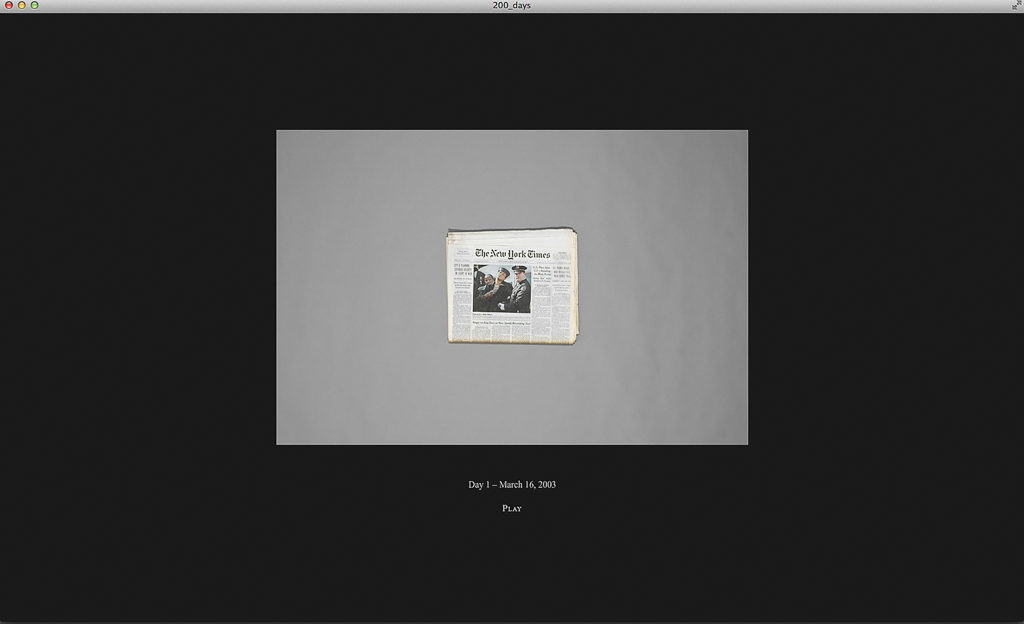
200 Days
Launch date: January 14, 2004
Web project URL: www.200-days.com
200 photographs made for web viewing, color, silent
200 Days
2004
Single-channel video, color, silent, 10 min. Looped
Installation
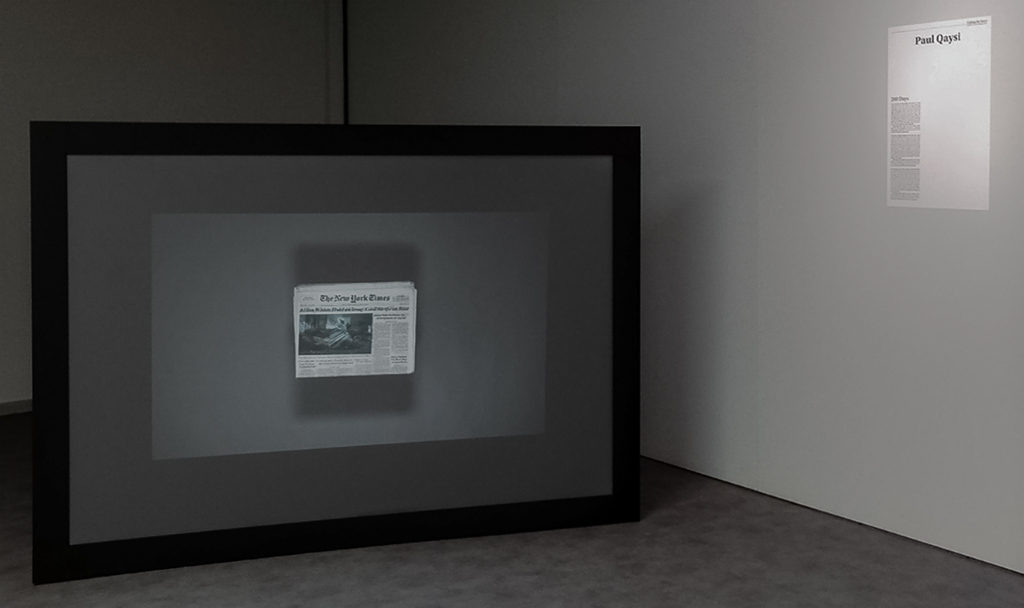
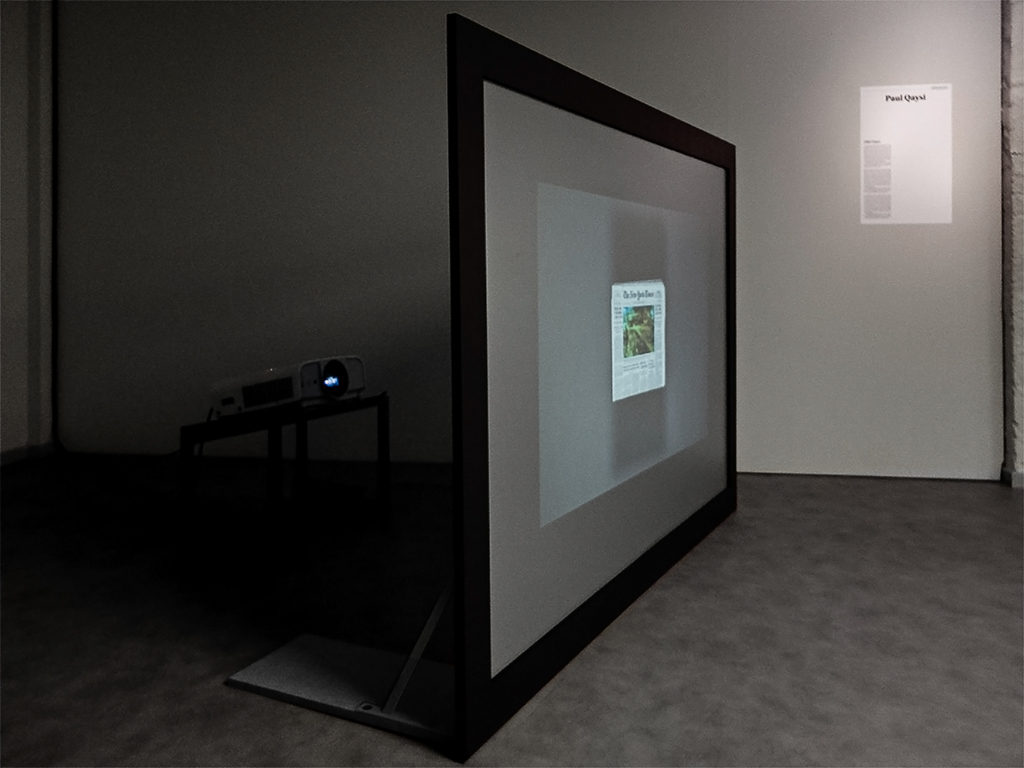
200 Days
2004
Free-standing rear-projection 81 x 44 inches screen
Single-channel video, color, silent, 10 min. Looped
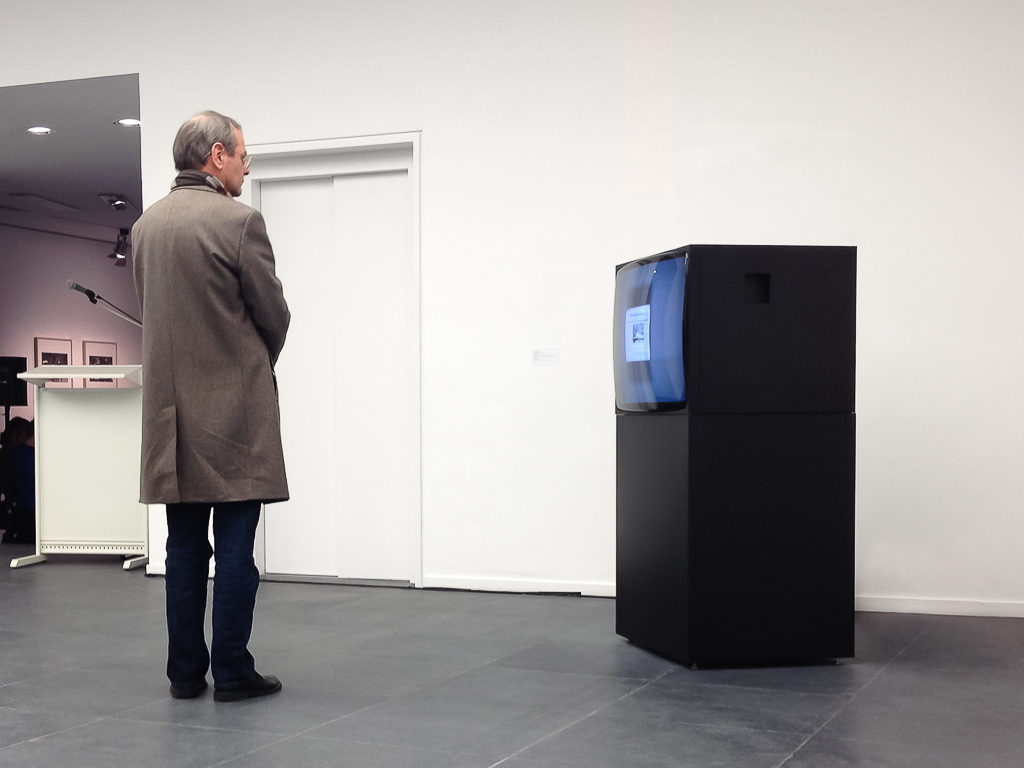
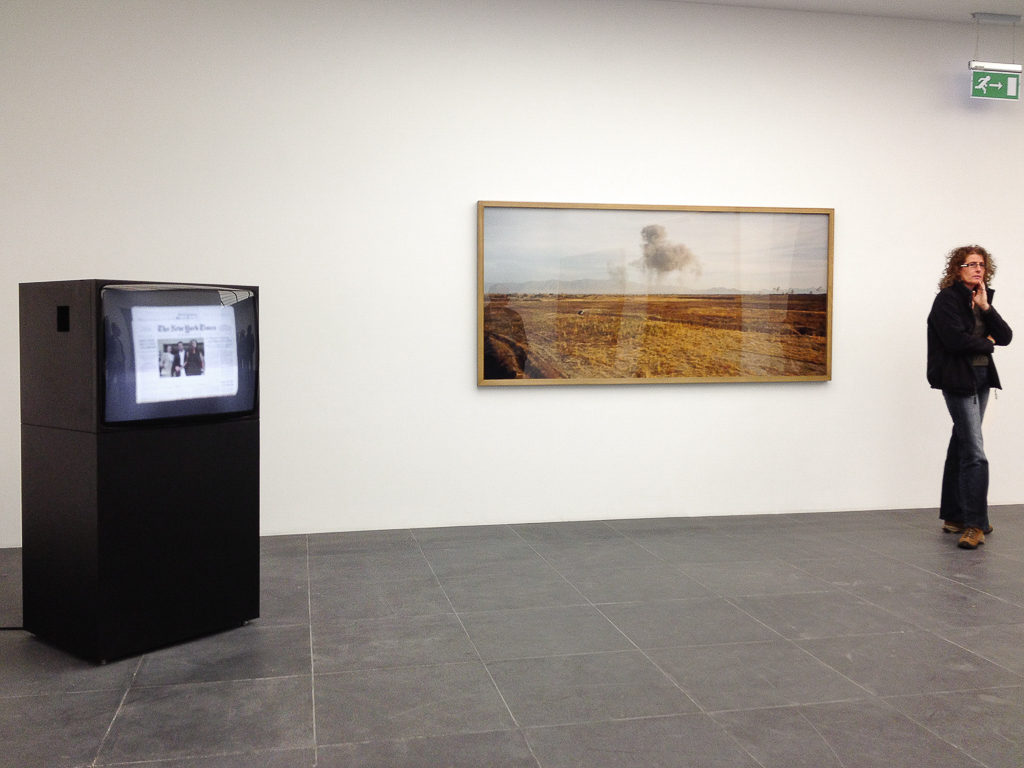
200 Days
2004
Free-standing 34 inches cubic monitor in steel frame
Single-channel video, color, silent, 10 min. looped
Exhibition Catalogue
The artist Paul Qaysi, uses photography and video to thematize chronological sequences, document processes, and turn temporal phenomena into visual ones.
The concept of his video 200 Days is as simple as it is compelling. Day after day, Qaysi collected issues of the New York Times and stacked them on top of each other, taking a photograph of each new edition’s front page. All two-hundred images placed one after the other result in the ten-minute video, in which each day’s news is immediately concealed by that of the next, while lighting, focus, and camera position remain unchanged.
While the first issue photographed, that of March 16, 2003, is relatively far from the camera, clearly etched against a gray background, each new front page comes closer to the lens, finally filling the entire frame. At the same time, the image becomes increasingly blurred. All that can be seen of the final issue of October 1, 2003, is shadowy traces of its title, lettering, and front-page photo.
In 200 Days, Paul Qaysi illustrates a fundamental problem with depicting events, here specifically events of war that took place in his native country and about which he learned from the US media. While events are reported as soon as they take place, each new report also covers over everything reported before it.
Dr. Jule Hillgärtner
RAY 2012 Fotografieprojekte
Translation by James Gussen
Basting, Barbara. Making History: an Exhibition at the Frankfurter Kunstverein, the Mmk Museum Für Moderne Kunst Frankfurt Am Main, and the Mmk Zollamt. Ostfildern: Hatje Cantz, 2012.
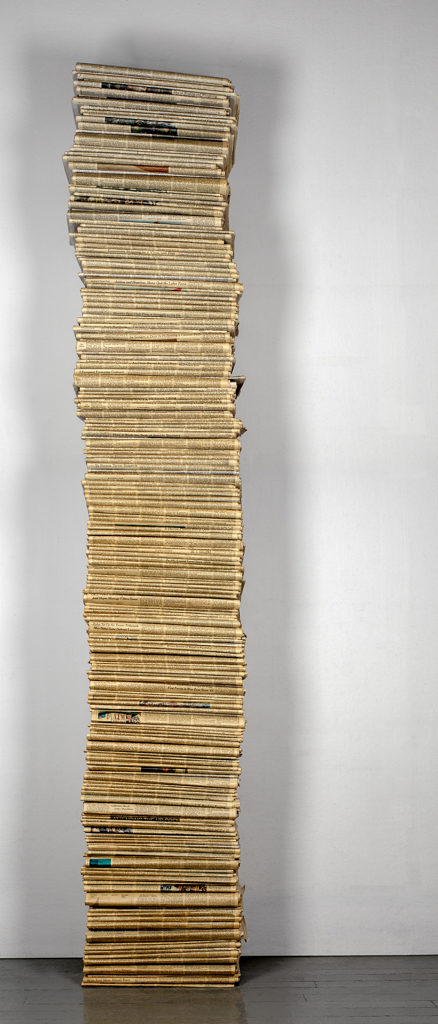
Production view, in the studio at 70 John street, Brooklyn, 2003